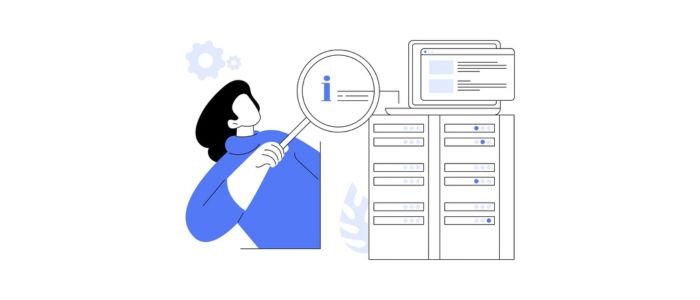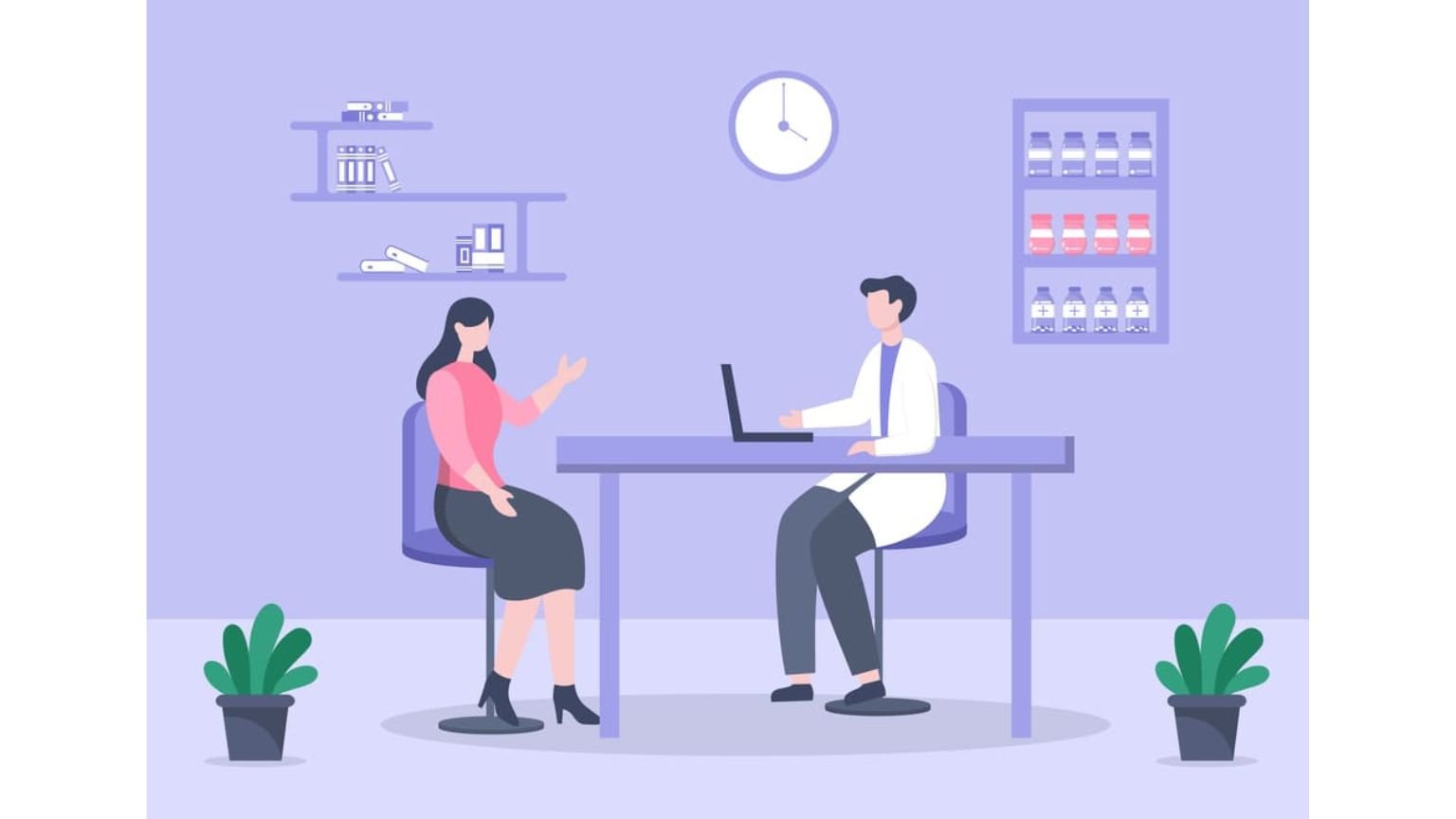The Power of Content Marketing in Growing Leads for Rehab Centers
Rehab centers operate in the most competitive and sensitive industries, where lead generation is a lifeline for patients in need and a business goal. Families looking for addiction treatment face an urgent situation, which means treatment facilities should ensure that the right information and support are always within reach. Addiction recovery is deeply personal, and trust plays the main role in the decision-making process. Patients and their families look for reassurance that they are opting for a recovery center with ethical practices, compassion, and proven expertise.
This is why content marketing is invaluable. By showcasing professional knowledge, answering common questions, and publishing thoughtful resources, rehab centers can address misconceptions and fears and build authority. With the passage of time, this trust-steered approach transforms website visitors into leads who want help.
The Importance of Content Marketing in the Rehab Industry
Content marketing is the most powerful tool for rehab centers; it is also the essential part of the marketing strategy for 97% of marketers. Rehab centers use it to connect with people in need of addiction recovery. It guides patients and their families, reassures, and provides a way to educate via a highly sensitive decision-making process. By producing informative, compassionate, and valuable content, rehab centers can help more patients start their healing journey, generate consistent leads, and strengthen their reputation.
Positioning Rehab Center as an Authority in Addiction Treatment

Addiction recovery is a subtle field, and patients should know they will get professionals having deep expertise. By publishing educational content consistently, like articles on relapse prevention, therapy approaches, and detox options, rehab centers shows authority and knowledge. Gradually, this positions the rehab center as a trusted leader in addiction treatment.
Standing Out in a Highly Regulated & Competitive Market
The addiction treatment industry is heavily regulated and competitive, which means rehab centers must find ethical approaches to stand out. Content marketing helps in achieving this by emphasizing compliance with industry standards, showcasing staff expertise, and highlighting unique treatment philosophies. A rehab center that communicates with compassion and clarity via its content easily differentiates itself, attracts qualified leads, and converts them into admissions.
Building Trust with Patients & Families
When someone looks for addiction treatment, they are overwhelmed with urgency, uncertainty, and fear. Families want reassurance that their loved one will be looked after with expertise and dignity. Content marketing enables rehab centers to handle these emotional needs via guides, videos, and blogs. Doing this allows rehab centers to share recovery success stories, explain treatment processes, and answer common questions. Such transparency makes families feel comfortable and confident about reaching out, and it also builds credibility.
Types of Content that Drive Leads for Rehab Centers
When it comes to addiction treatment, content should do more than just generating clicks, it has to connect with individuals during their most vulnerable moments. Content marketing, if done right, attracts attention, encourages patients to take action, nurtures relationships, and builds trust. Below are 6 impactful types of content that rehab centers must use to generate leads consistently.
1. Video Content
Video has become the king of content and is highly effective in creating emotional content, which is important in addiction recovery marketing. It allows rehab centers to show authenticity and humanize their services. Video content works well across various platforms, like social media, YouTube, and websites, ensuring greater lead potential and wider reach.
Types of Engaging Video Content
- Expert Advice: Short clips from medical staff or counselors answering common questions build trust and authority.
- Recovery Stories: Former patients sharing their healing path creates relatable proof of success and inspires hope.
- Facility Tours: Offer a virtual tour of your rehab center. It helps families to visualize a welcoming and safe environment and ease fears.
2. Education Articles & Blogs
Blogs remain the most dynamic tools for attracting organic traffic to a rehab center’s websites. Patients and families have questions about treatment options, detox, and addiction, and they turn to Google to get answers. SEO-optimized and well-written blog posts help rehab centers appear at the top of such searches. Blogs establish the rehab center as a knowledge resource. Every article is an opportunity to guide readers towards the next step and build credibility, whether that is downloading a resource or calling the facility.

Examples of Blog Topics
- Relapse prevention strategies.
- The difference between outpatient and inpatient treatment.
- How to talk to a loved one about rehab.
- Signs of drug or alcohol addiction.
3. Email Newsletters
Email newsletters are necessary for long-term lead nurturing. An empathetic and consistent newsletter helps rehab centers stay top-of-mind with patients and families until they want to take action. Personalization is key, and segmenting email lists ensures that the message feels relevant. This increases conversion rates and engagement.
Email Content Ideas
- Inspirational message to motivate patients and families.
- Reminders about available events or resources.
- Updates on success stories or treatment programs.
- Educational articles on recovery and addiction.
4. Downloadable Resources
Downloadable content, like eBooks, checklists, or guides, is a guaranteed way to get qualified leads for rehab centers. Trade these resources with contact information; in this way, rehab centers can continue to nurture patients over time and grow their email list. These resources have high-value insights and motivate visitors to share personal details (with consent), offering a direct path to lead generation.
Examples of Effective Downloaded Resources
- Comprehensive eBooks on specific therapies or addictions.
- Printable checklists for preparing a loved one for treatment.
- ‘10 Questions to Ask Before Choosing a Rehab Center‘.
- ‘A Family Guide to Addiction Recovery‘.
5. Resources & FAQs Pages
When families want to act, they need reliable and quick answers to the most pressing questions. Resource and FAQ pages should serve as an instant point of reassurance and trust-building. Having such resources available helps rehab centers capture high-intent leads and reduces hesitation. Someone visiting an FAQ page is very close to making a decision, and well-structured and clear answers can make them pick up the phone or fill out a form.
Examples of Questions to Address
- Is treatment confidential?
- What is the admissions process like?
- What types of insurance do you accept?
- How long does rehab last?
6. Social Media Campaigns
Social media is another dominant platform for engaging with leads and building awareness in a non-intrusive and supportive way. Families usually don’t message rehab centers for help on social media; the content they see influences their decisions later. Social media campaigns require consistency. By using targeted ads, engaging with followers, and posting regularly, rehab centers can connect with families looking for support and expand their reach.
Effective Social Media Content Tips
- Short educational clips that demystify myths about addiction.
- Awareness posts during events like National Recovery Month.
- Live Q&A sessions with addiction experts.
- Inspirational stories and quotes.
Content Marketing Strategies to Drive Leads for Rehab Centers

Content marketing is about using empathetic and strategic communication to reach patients and families when they need help. For rehab centers, a properly designed content strategy will gently guide people towards taking action, establish authority, and build authority. Below are the effective ways content marketing gets leads in the addiction recovery space.
a. Keyword Research
The basis of any content strategy depends on keyword research. Rehab centers must keep their focus on long-tail keywords that resonate with real intent and interest. Such terms suggest that the individual is considering treatment actively. By adding these keywords into service pages, FAQs, and blogs, rehab centers can meet the patients right when they are about to make a decision. Examples are:
- ‘Cost of alcohol rehab in [city name]‘.
- ‘Addiction treatment for professionals‘.
- ‘Rehab centers near me‘.
b. SEO
After the keyword research is done, SEO (search engine optimization) ensures that the content drives organic traffic and ranks well. Rehab centers can create landing pages, resource pages, and articles that answer common questions, like relapse prevention, detox timelines, or treatment options. High rankings also communicate credibility. When a rehab center shows up in search results consistently, families view it as a trustworthy choice. Strong SEO practices are:
- Building backlinks from reputable wellness and health websites.
- Structuring pages for easy navigation.
- Optimizing meta titles, headers, and descriptions.
- Using target keywords naturally within content.
c. Pay-Per-Call & Content Marketing
PPCall (pay-per-call) marketing is a performance-driven strategy where rehab centers only pay when a lead calls the facility. When merged, content marketing nurtures trust, and pay-per-call ensures that high-intent leads connect with the admissions team directly. PPCall and content marketing work hand-in-hand. Here is how it is done:
- Content Attracts the Right Audience: Videos, guides, and informative blogs bring families to a rehab center’s website.
- Call-to-Action Motivates Instant Contact: Embedding phone numbers and options within content makes it easy for visitors to take the next step.
- Pay-Per-Call Tracking Optimizes Campaigns: Rehab centers can measure which bits of content bring in the most calls, allowing for higher ROI and better targeting.
d. Local SEO
For many patients, addiction recovery decisions are made within a specific geographic context. A parent looking for addiction treatment is not looking for general information; they want local and instant solutions. Optimizing for local searches includes creating content that speaks to the local community, collecting positive reviews, and maintaining NAP (Name, Address, Phone) details across all platforms. Such a hyper-local strategy ensures that families find the right rehab center. Local SEO helps rehab centers appear in:
- Local business directories.
- ‘Near me‘ searches.
- Google Maps listings.
e. Engagement
Engagement is a two-way communication and broadcasting of information. Community forums, Q&A sections, and blogs allow rehab centers to show compassion and answer questions. Blogs have the potential to generate emails or generate emails or comments from family members looking for further advice. Responding empathetically and promptly turns these interactions into lead generation and opportunities for connection. Private social media groups or forums also offer a safe space where patients and families can interact with professionals. This positions the rehab centers as a partner in recovery and a guide.

f. Social Proof
Addiction recovery is a personal journey, and patients want proof that rehab centers have genuinely helped similar people. By demonstrating real experiences, rehab centers can show credibility and build emotional connections. Social proof can be placed strategically into email campaigns, resource sections, and landing pages to reinforce trust. Social proof becomes reassuring during a stressful decision-making process. Examples are:
- Video interviews with previous patients sharing their recovery journeys.
- Case studies detailing treatment success stories.
- Testimonials from patients and their families.
g. Paid Ads
While organic marketing approaches take time, paid ads give instant visibility. Platforms like social media and Google Ads allow rehab centers to target people looking for addiction-related terms. A guide about ‘How to Find a Good Rehab Center?’ can attract patients and their families considering treatment. However, the tone must be ethical and empathetic. Hard-selling is not allowed in this industry, and focus must always be on guidance, support, and education. Paid ads complement content marketing by enhancing reach. A well-placed ad drives traffic to landing pages, resource pages, or blogs designed to capture leads. When combined with a solid follow-up system, this method ensures that no opportunity is missed.
h. Email Marketing
Addiction recovery is not a quick decision. Families take weeks and sometimes months before committing to treatment. Email marketing fills this gap by nurturing leads with compassion and consistent communication. Staying in touch means rehab centers can build trust and maintain visibility, ensuring they become the first choice when it comes to getting help. An effective email series can include:
- Gentle reminders to reach out when ready.
- Stories of success and hope.
- Education content on recovery and addiction.
- Welcome messages with helpful resources.
i. Content Promotion
Content promotion becomes necessary when no one sees it. It is important to extend reach beyond organic search. Paid promotions can boost visibility and must be executed carefully to maintain healthcare advertising regulations and compliance. The mission is to guide patients into making informed decisions. Effective promotion strategies are:
- Leveraging press releases for new initiatives or programs.
- Syndicating content via health-focused websites.
- Sharing videos and blogs on social media platforms.
How Content Marketing Generates Patient Admissions for Rehab Centers?
Publishing content enables rehab centers to increase their visibility and discoverability, but it does not guarantee new patients. The real worth lies in converting interested prospects into qualified leads who are ready for treatment. This requires a mix of compliance, messaging, and technology. Below are proven strategies rehab centers use to convert content into leads effectively.
Gated Content for Lead Capture
Gated content helps rehab centers in identifying and connecting with serious patients. By offering resources in exchange for contact information, treatment facilities can grow an email list of interested leads. This approach enables long-term nurturing via supportive communication and follow-up emails and positions the rehab center as an authority.

Strong CTAs (Call-to-Actions)
Each content piece must guide readers towards the next step. An empathetic and clear CTA transforms passive readers into patients. CTAs must be aligned, concise, and visible with the visitor’s intent. Placement matters when it comes to CTAs and works best when integrated at the end of videos, resource pages, and blogs in the most natural way. This ensures that support feels available when needed.
Examples of Effective CTAs
- ‘Download our free family guide to addiction recovery‘.
- ‘Speak with an admissions specialist today‘.
- ‘Call now for a confidential consultation‘.
Phone Call Scheduling & Tracking
Phone calls are the most effective lead channel for rehab centers. Adding scheduling options, call tracking, and click-to-call buttons in the content pages makes the process smooth. Rehab centers can ensure that when a person is ready to reach out, the process is supportive, quick, and frictionless.
Best Practices Include
- Offering easy-to-fill scheduling forms for families to book consultations.
- Using call tracking systems to identify which parts of content are generating the most calls.
- Embedding a ‘Tap to Call’ button in mobile pages and blogs.
Live Chat & Chatbots for Instant Support
Families looking for addiction treatment want answers fast. Live chats and chatbot features allow rehab centers to offer real-time responses, bridging between action and curiosity. Both tools increase the likelihood of converting high-intent visitors into leads and provide convenience before they click away.
- Live chat provides one-on-one interaction with the admission specialists and gives visitors reassurance from an actual human’s voice.
- Chatbots can handle common questions.
Ensure Sensitivity in Messaging
Tone matters when creating addiction treatment ads. Addiction treatment content must be crafted with respect and empathy. Overly aggressive, judgmental, or misleading language can push patients away and harm credibility. When content feels respectful and safe, patients and families take the first step towards contacting the rehab center.
Tips for Ensuring Sensitivity
- Emphasize professionalism, compassion, and confidentiality.
- Offer hope and be realistic about the recovery journey.
- Acknowledge the challenges families face without stigma.
Following Marketing & HIPAA Regulations
Since addiction recovery involves sensitive data, compliance standards are raised. All lead generation strategies for rehab treatment centers must adhere to ethical marketing standards and respect privacy laws. Maintaining compliance reinforces trust that families need before finalizing a rehab center and prevents legal issues.
Key Considerations
- Avoid exaggerated or manipulative claims about treatment outcomes.
- Using HIPAA-compliant platforms for communications and emails.
- Protecting patient information when collecting data via chats or forms.
How to Measure Success in Rehab Content Marketing?

Content marketing is about ensuring that each effort translates into a positive impact for rehab centers. Measuring success ensures that rehab centers increase admissions, refine their strategies, and understand what works.
Key Metrics to Monitor
To evaluate success, rehab centers must focus on various metrics that reflect lead generation and engagement.
- Form Submissions: Downloads of contact forms, inquiries, and guides help measure conversion potential.
- Call Volume: Tracking inbound calls linked to specific content reveals which part of the content drives the most immediate action.
- Time on Page: Longer web page visits suggest that content is addressing visitor concerns, trustworthy, and valuable.
- Organic Traffic: A stable increase shows that keyword strategies and SEO are driving visibility.
The Importance of Continuous Optimization
Content marketing is an ongoing effort. Patient needs shift, competition increases, and search trends evolve. Reviewing performance data regularly allows rehab centers to expand on successful topics, update outdated information, and identify underperforming content. Small adjustments result in improved results. By consistently optimizing, tracking, and measuring, rehab centers can ensure that the content marketing inspires people to take the next step and reach them in the moment of need.
Tracking Conversions to Admissions
The main goal is admissions, and this is why tracking conversions from various digital touchpoints to genuine patient intake is important. Analytics tools, CRM integrations, and call tracking numbers help rehab centers connect content interactions with real results. This data indicates which content drives patients to get help.
Conclusion
Other than a promotional tool, content marketing bridges what connects people in crisis with the care and guidance they need. By combining strategies, empathy, and education, rehab centers can reach patients and families at the moment when they are looking for answers. Each guide, video, or blog post becomes an opportunity to open the door to healing and build trust. When coupled with ongoing refinement and measurable results, content marketing evolves into a solid path for patient acquisition. It empowers rehab centers to extend their vision of recovery beyond their walls and into the lives of patients seeking hope.
FAQs
What types of content bring rehab centers the most leads?
Downloadable guides, video testimonials, localized service pages, gated resources, and educational blog posts with clear CTA drive the highest-quality leads.
How long does content marketing take to generate leads for rehab centers?
Organic SEO content typically takes 3 to 6 months to show a steady flow of leads, whereas pay-per-call and paid promotions can generate calls instantly.
Can content marketing be used with pay-per-call campaigns?
Yes, content builds relevance and intent, while pay-per-call captures high-intent leads and callers via trackable numbers and click-to-call CTAs for ROI measurements.
How can rehab centers convert visitors into leads on content pages?
Rehab centers can convert visitors into leads on content pages by using clear CTAs, simple scheduling forms, click-to-call buttons, live/chat support, and gated downloads to capture contact information and reduce friction.


Leave a Reply